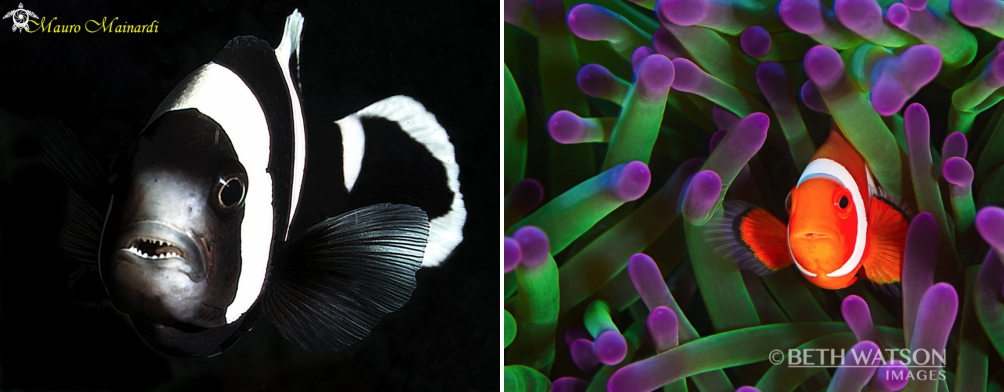Everybody Loves a Clown!
Arguably one of the cutest fish in our oceans as portrayed in Disney’s Finding Nemo, the Clownfish has more to offer than your average fish.
The Clownfish, also known as an anemonefish, has roughly 28 – 30 recognized species and makes its home in the warm waters of the Indian and Pacific Oceans.
It ranges in size from 10 to 18 cm and gets its name from its bright colors and quirky swimming motion that can be observed as it darts in and out of the tentacles of the sea anemone it resides in.
These fishes and their host anemone have symbiotic relationships that provide value to both parties. By building up a protective layer of mucus that makes it immune to the sting of the anemone, the clownfish can swim in and around it without harm. Using the protection of the anemone’s poisonous tentacles, it is free to handle its housekeeping duties including, eating parasites and dead tentacles, attracting potential prey for the anemone with its bright colors, and providing nutrients from its droppings. Even though the anemone provides protection against predators, the clownfish is often preyed upon by large fish, eels and sharks.
In the wild, they inhabit a single sea anemone in groups that generally include a breeding male, a female and a number of younger male clown fish. All clownfish are born as males and can change sex when necessary. When the dominant female of a group dies the largest male in the group will turn itself into a female to take its place, this change cannot be reversed back.
Females can lay hundreds or even thousands of eggs at one time depending on the species. Usually around a full moon cycle, the eggs are attached to a flat surface close to the sea anemone which they inhabit for protection. The male then ferociously guards the eggs from being eaten until they hatch in just over a week later.

Left: clownfish in Bunaken Nationa Marine Park – Indonesia by Mauro Mainardi
Right: clownfish and anemone in Puerto Galera – Philippines by Beth Watson
In addition to guarding eggs, clownfish are extremely territorial animals that will fiercely defend their home against other clownfish. They are very aggressive by nature and often attach divers as they approach.
This critters are omnivorous animals meaning that they eat both plants and animals. Besides eating dead tentacles, parasites and leftovers from the prey of their host anemone, clownfish eat a wide range of food such as algae, plankton, mollusks and small crustaceans. The diet of each clownfish is however largely dependent on the species and what food is available in the area they live in.
Due to their cuteness and ease of care, clownfish are often kept as pets and make up over 40% of the global marine ornamental trade. They are both bred in captivity, and captured from the wild. Luckily, the population of these fishes in the wild is still large and stable due to their ease of captive breeding and strong survival rate in the wild.
The next time you get a chance to observe a clownfish clowning around, take a moment to realize it’s not all fun and games for these cute little creatures.
WORDS by John Fifer / www.reefid.org

















